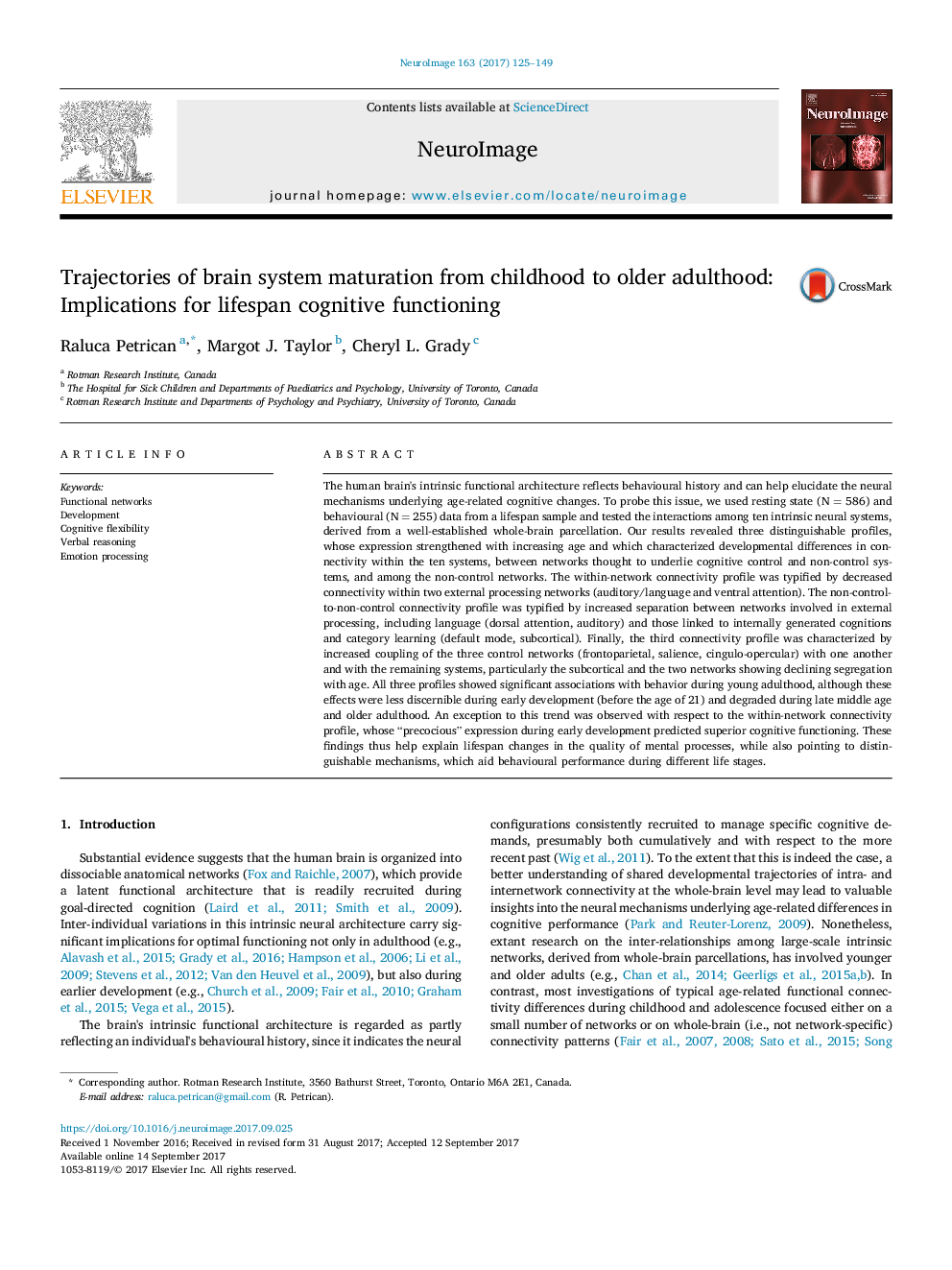ترجمه فارسی عنوان مقاله
مسیرهای بلوغ سیستم مغز از دوران کودکی تا بزرگسالی بزرگتر: پیامدهای عملکرد شناختی طول عمر
عنوان انگلیسی
Trajectories of brain system maturation from childhood to older adulthood: Implications for lifespan cognitive functioning
| کد مقاله | سال انتشار | تعداد صفحات مقاله انگلیسی |
|---|---|---|
| 156514 | 2017 | 25 صفحه PDF |
منبع

Publisher : Elsevier - Science Direct (الزویر - ساینس دایرکت)
Journal : NeuroImage, Volume 163, December 2017, Pages 125-149
ترجمه کلمات کلیدی
شبکه های کاربردی توسعه، انعطاف پذیری شناختی، استدلال کلامی، پردازش احساسات،
کلمات کلیدی انگلیسی
Functional networks; Development; Cognitive flexibility; Verbal reasoning; Emotion processing;

